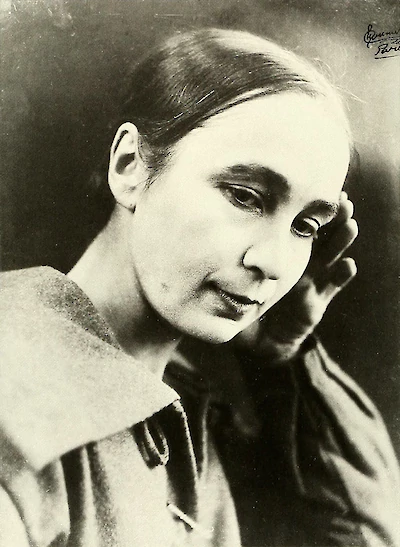

Natalia Goncharova
Art-Punk in Futurist Moscow
1881 – 1962[Editor’s Note: This essay was part of an impromptu speech given by Natalia Goncharova at a debate with the art group ‘Knave of Diamonds’ on February 12, 1912. Goncharova spoke at the debate in answer to David Burliuk’s presentation on cubism; her lover and collaborator Michael Larionov also spoke but was booed down. Exciting times in the Russian avant-guarde.]
Cubism is a positive phenomenon, but it is not altogether a new one. The Scythian stone images, the painted wooden dolls sold at fairs are those same cubist works. True, they are sculpture and not painting, but in France, too, the home of cubism, it was the monuments of Gothic sculpture that served as the point of departure for this movement. For a long time I have been working in the manner of cubism, but I condemn without hesitation the position of the Knave of Diamonds, which has replaced creative activity with theorizing. The creative genius of art has never outstripped practice with theory and has built theory on the basis of earlier works. If religious art and art exalting the state had always been the most majestic, the most perfect manifestation of man’s creative activity, then this can be explained by the fact that such art had never been guilty of theoreticalness. The artist well knew what he was depicting, and why he was depicting it. Thanks to this, his idea was clear and definite, and it remained only to find a form for it as clear and as definite. Contrary to Burliuk, I maintain that at all times it has mattered and will matter what the artist depicts, although at the same time it is extremely important how he embodies his conception.